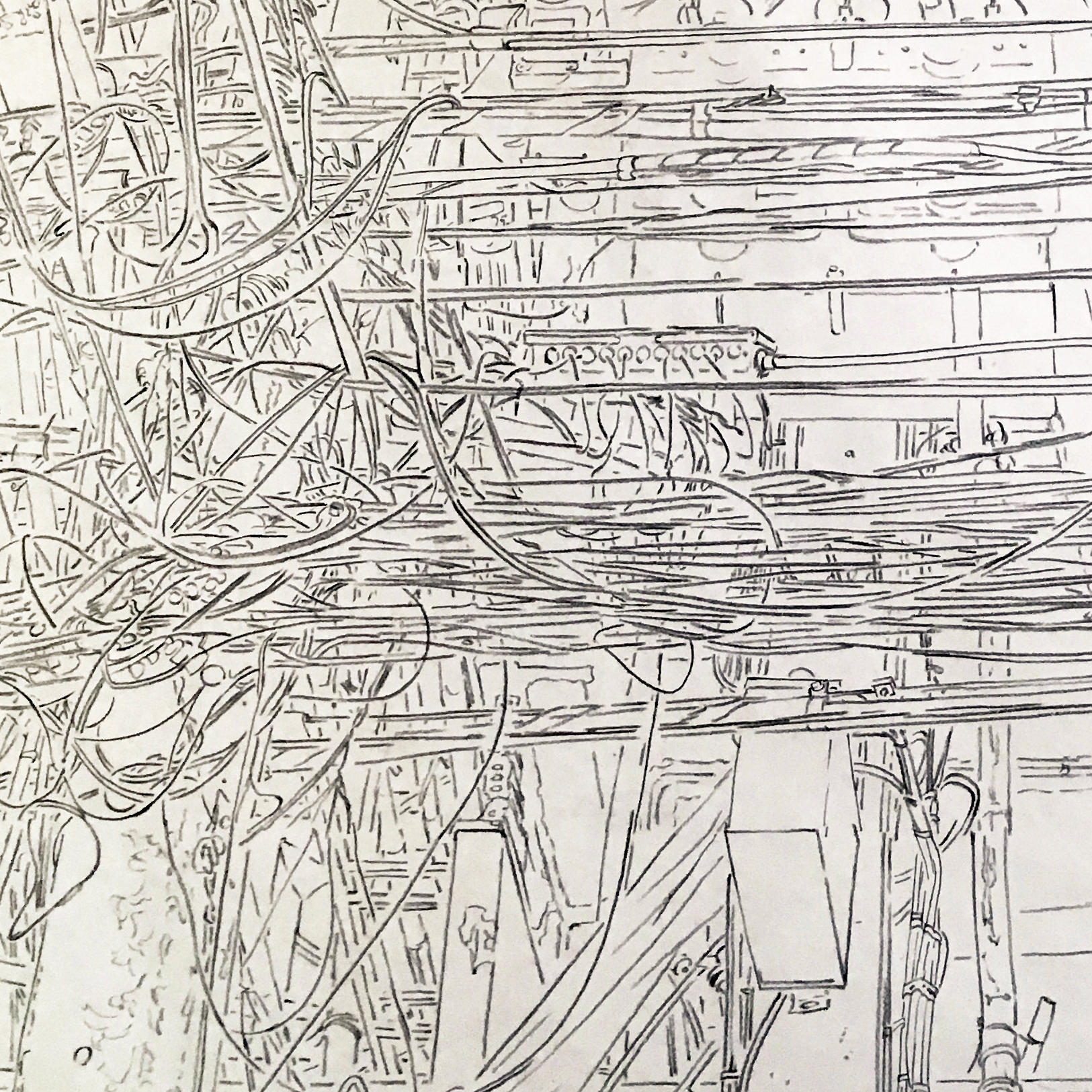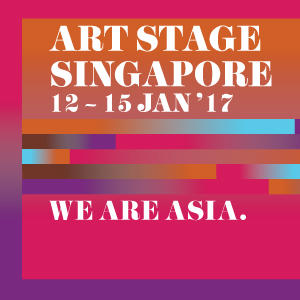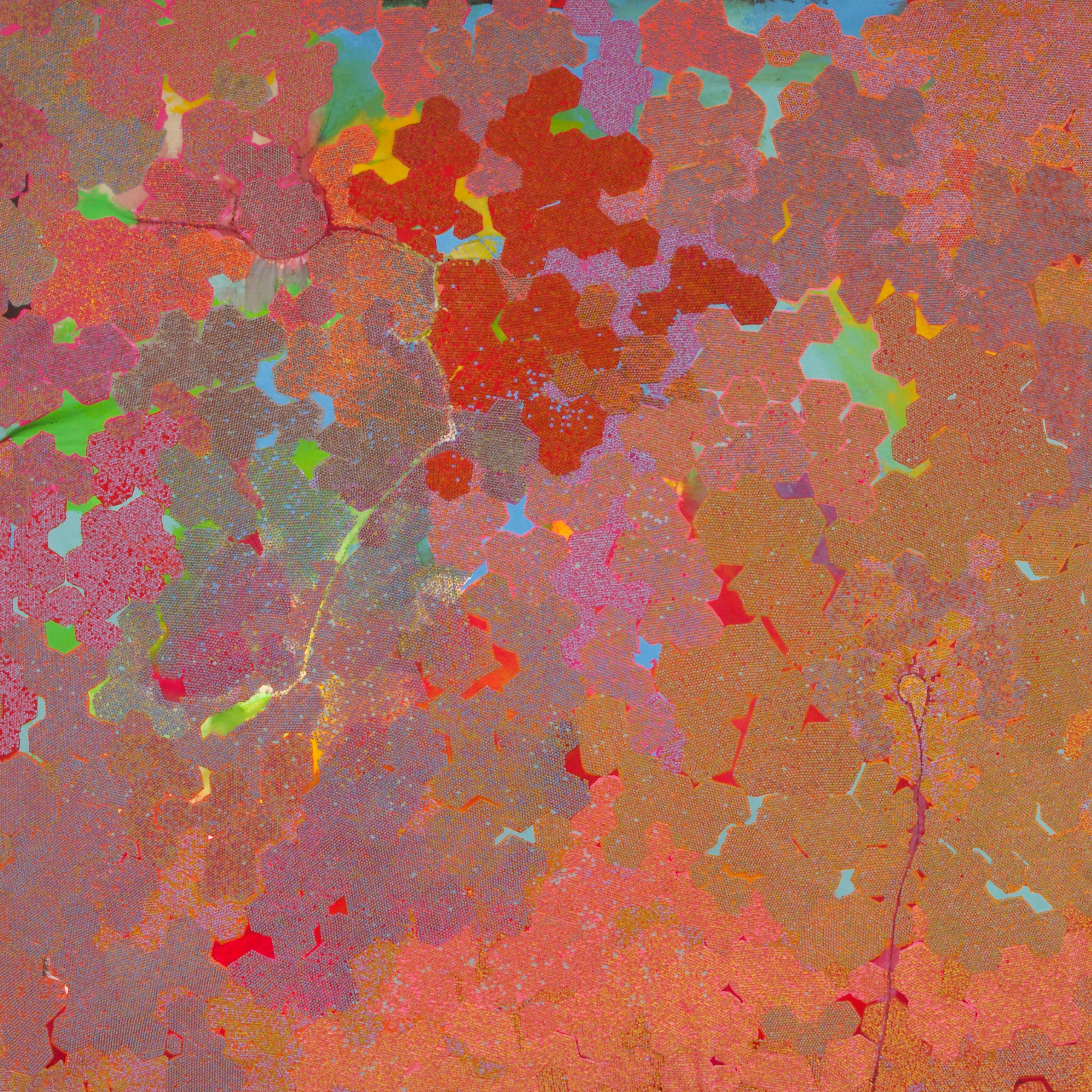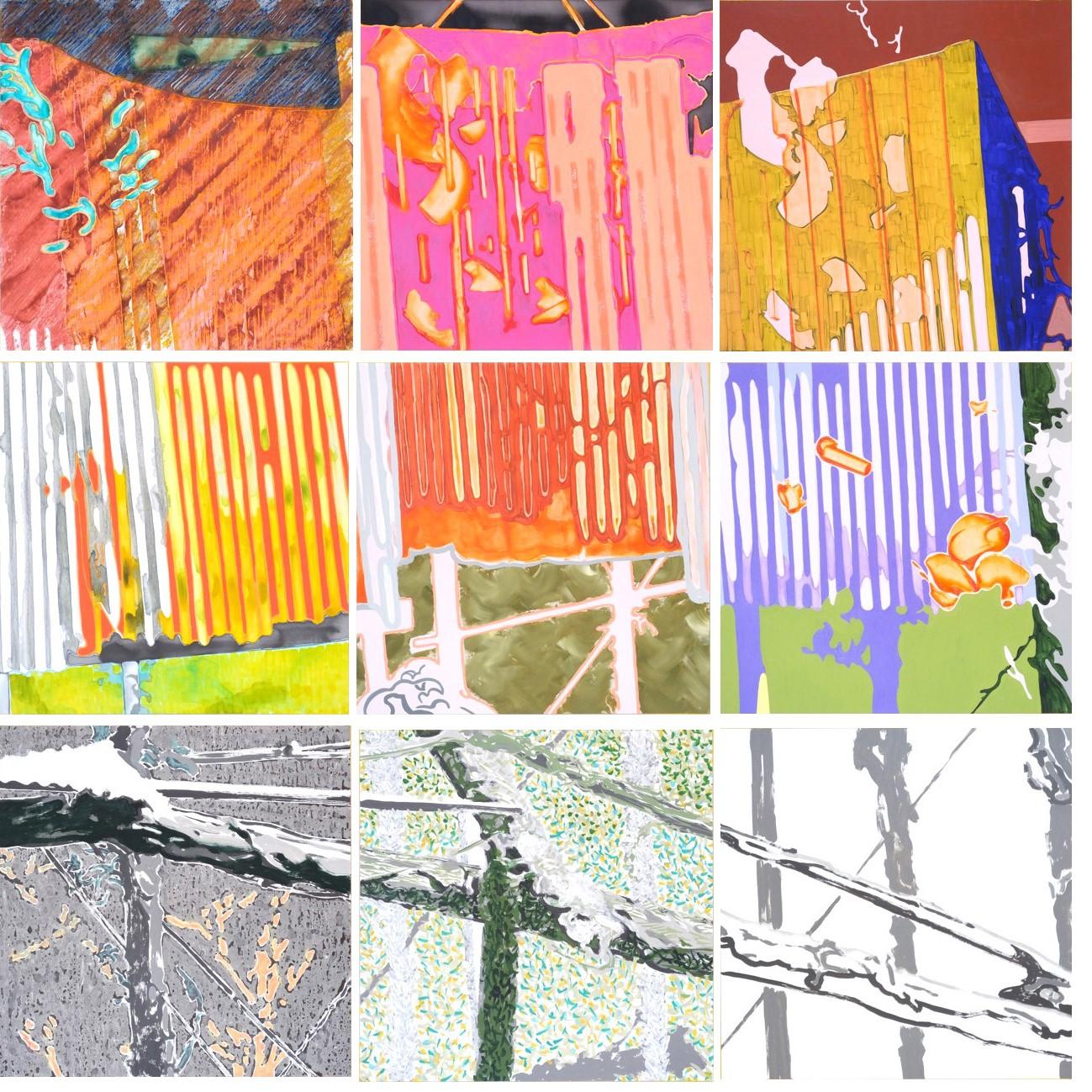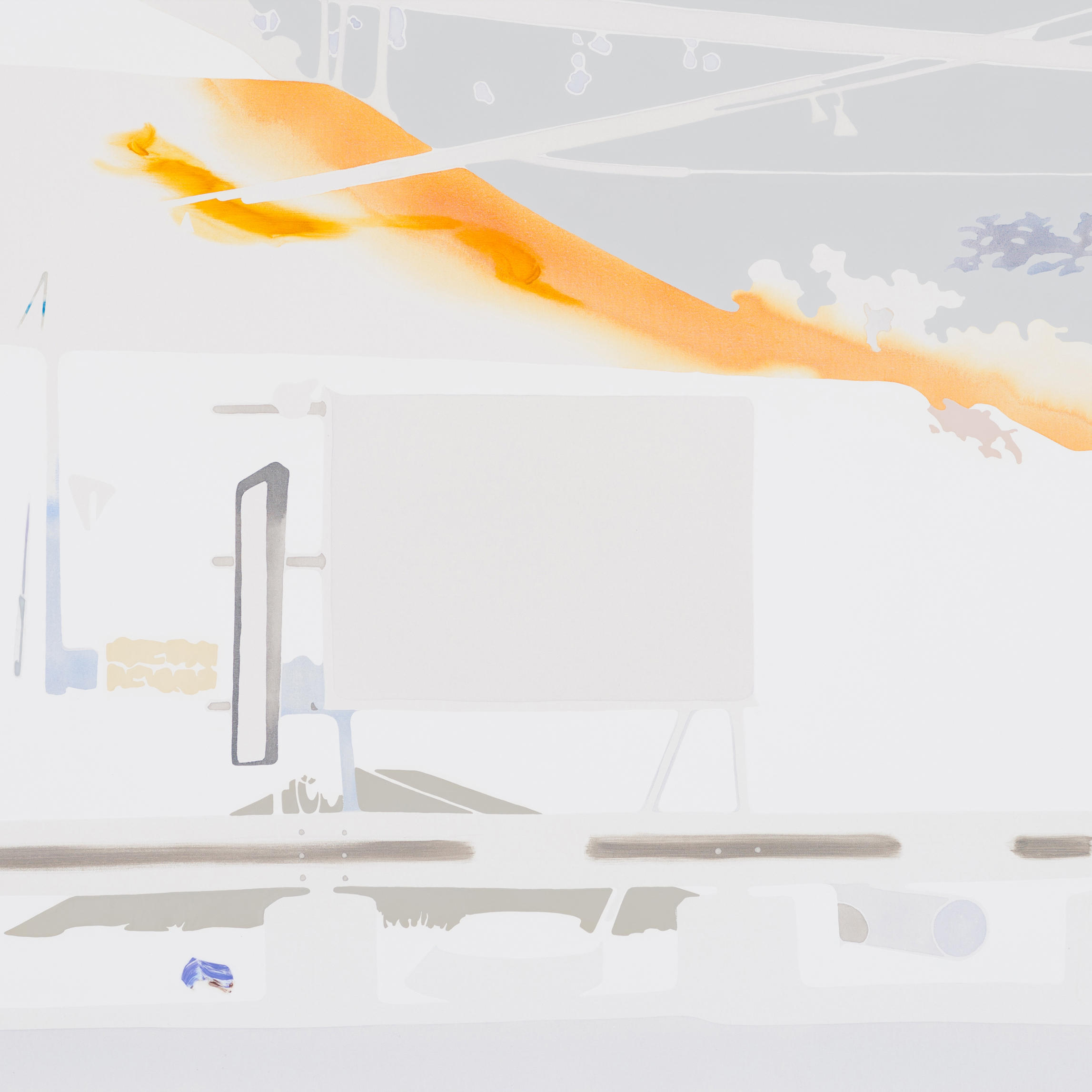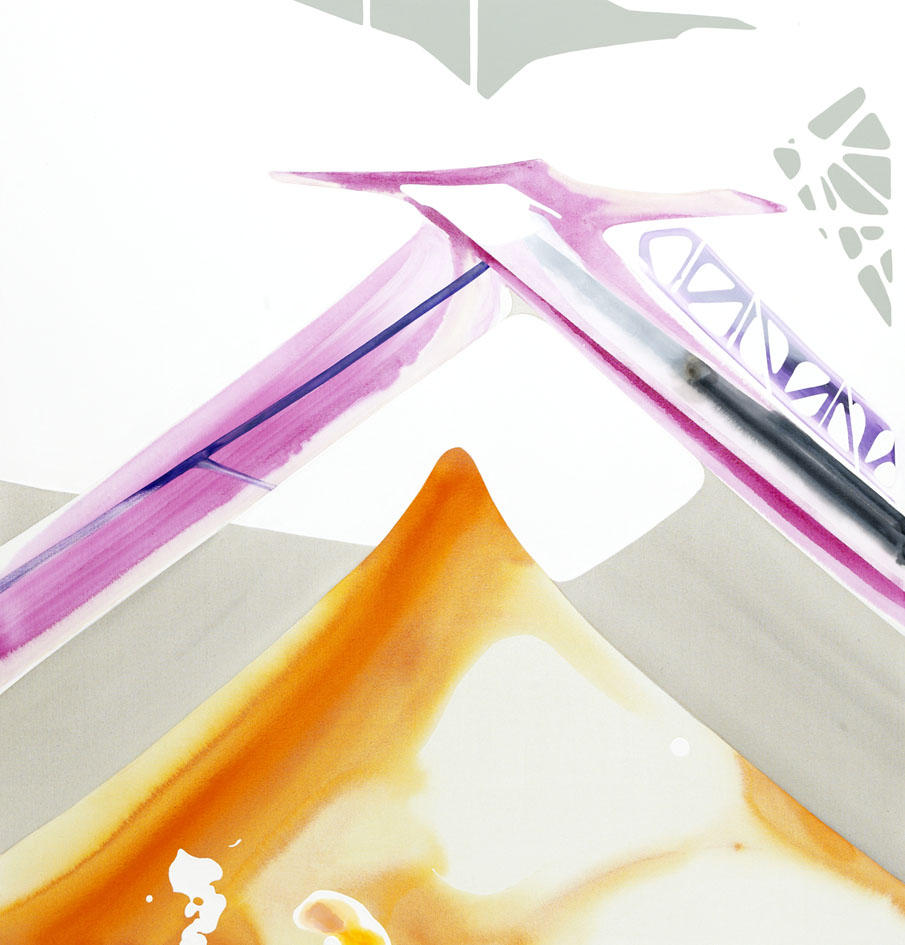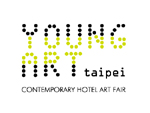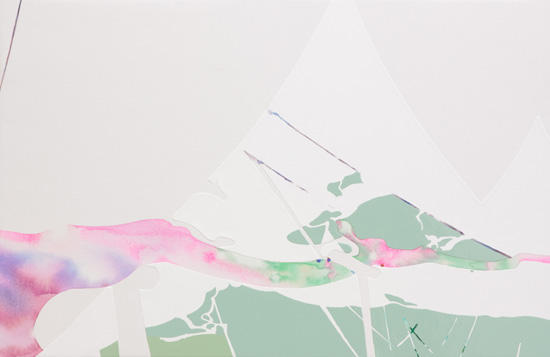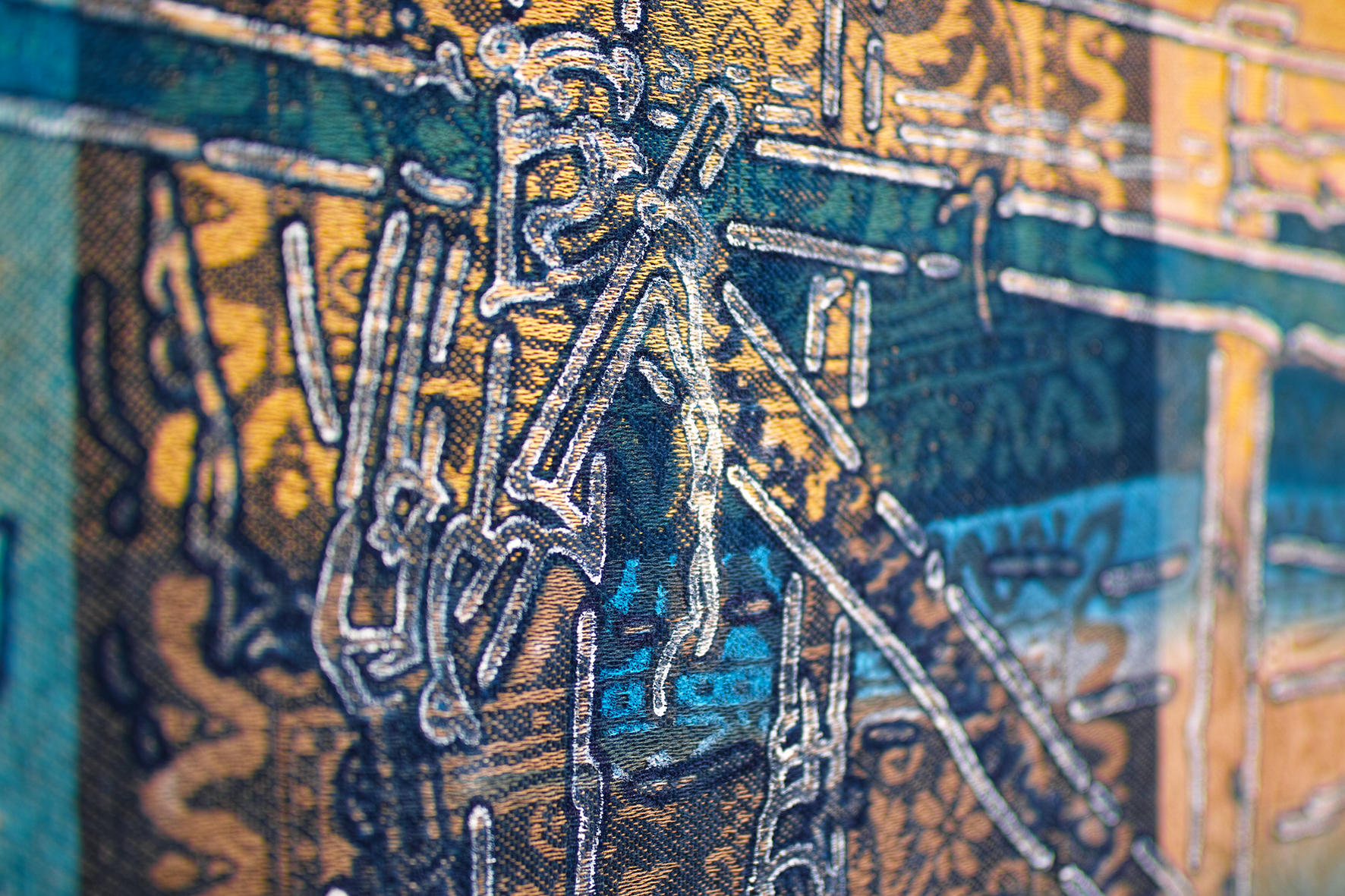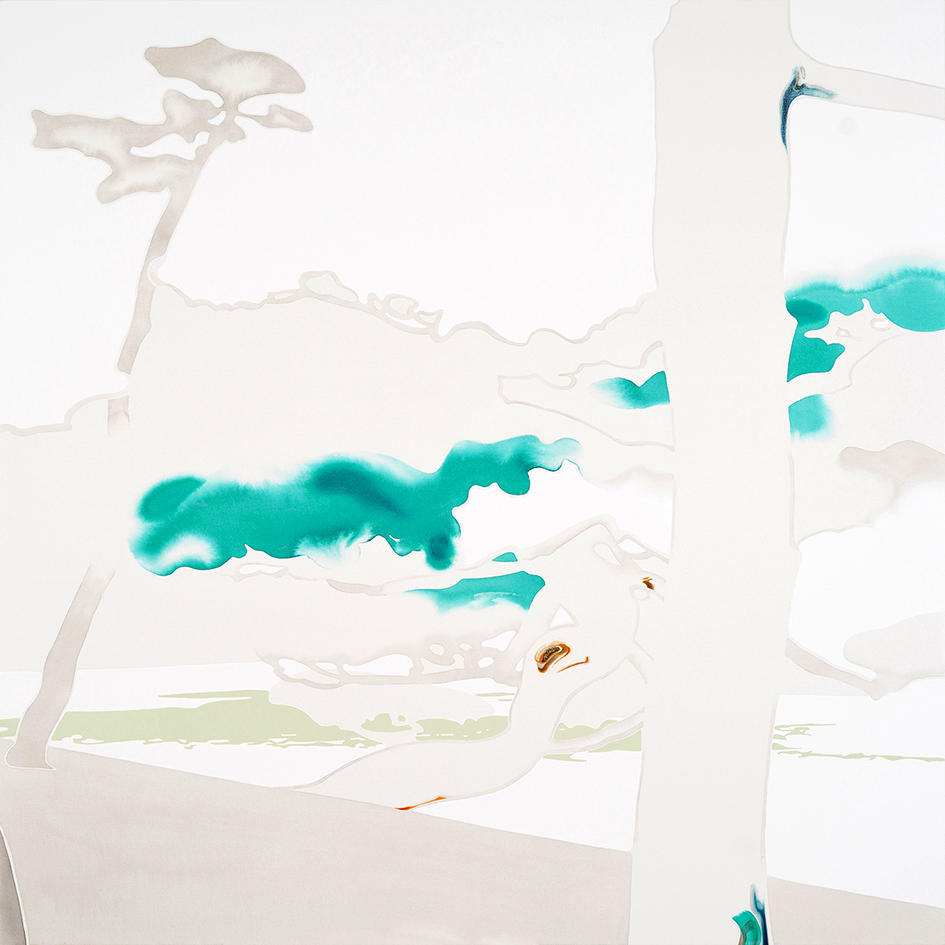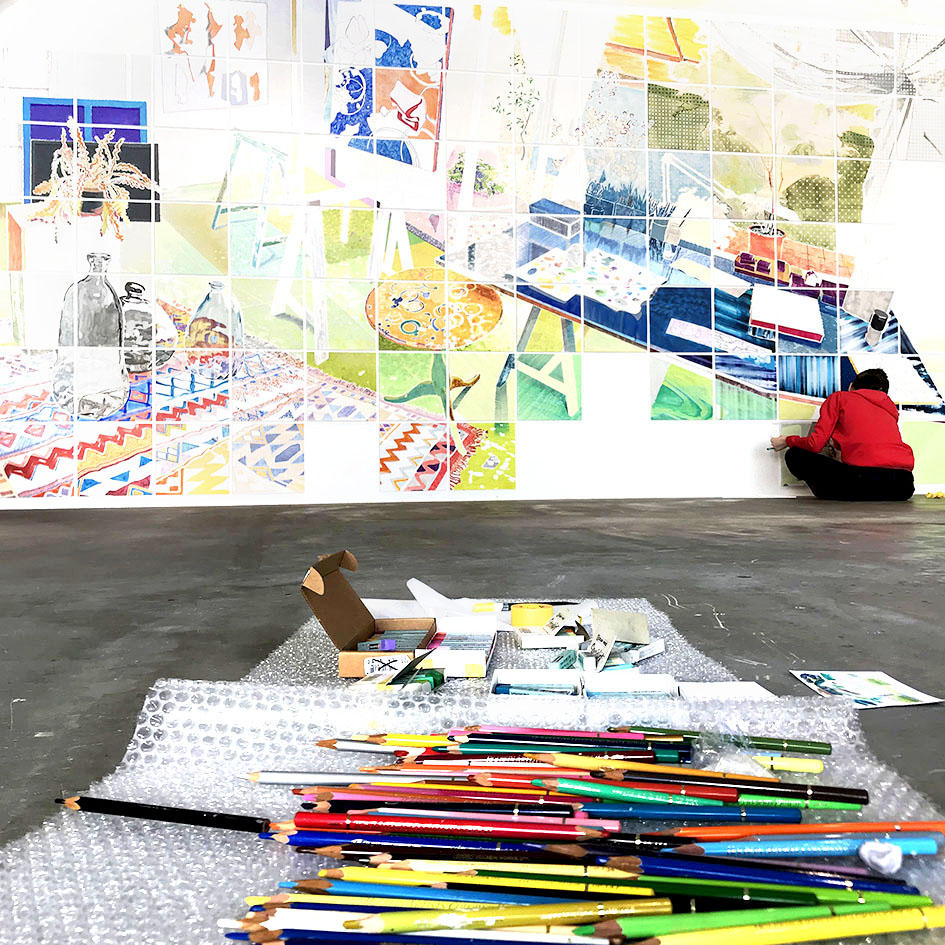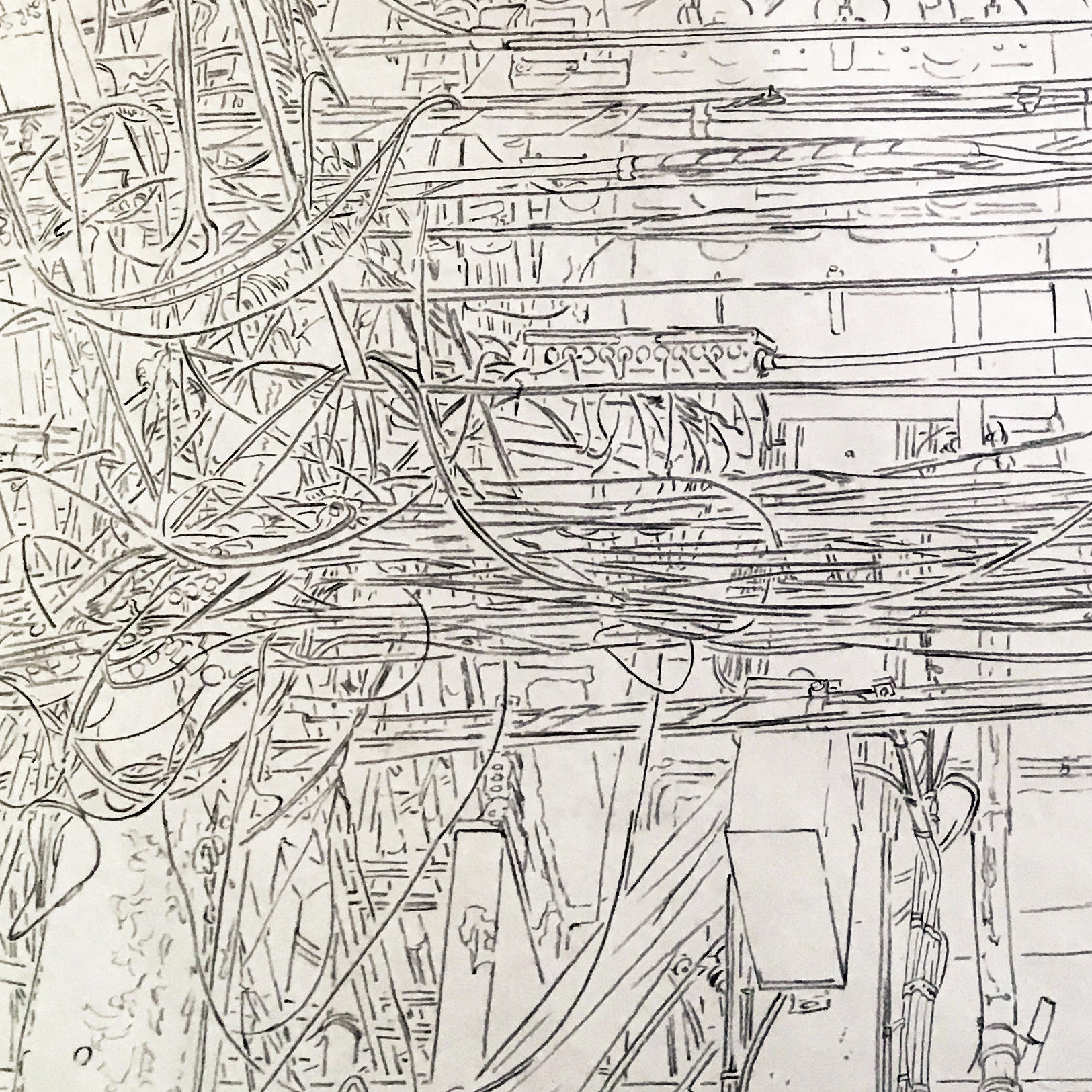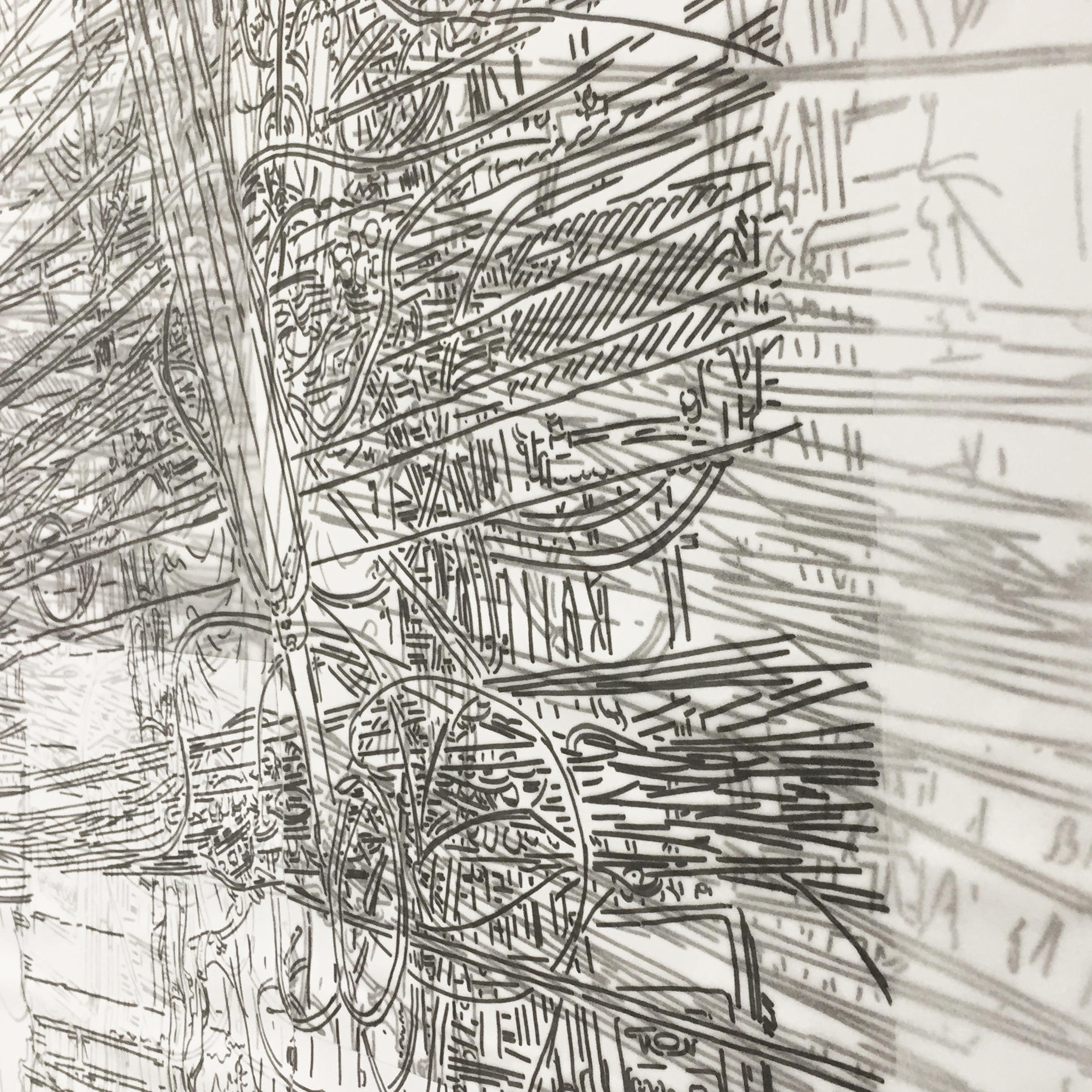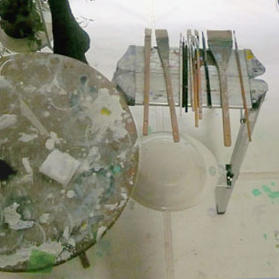Exhibition

Masumi Nakaoka's solo exhibition: Building Blocks
2017. Mar. 10 (Fri) - Apr. 2 (Sun)
Art Front Gallery is pleased to announce Masumi Nakaoka's solo show: Building Blocks.
| Date | 2017. Mar. 10 (Fri) - Apr. 2 (Sun) |
|---|---|
| Hours | 11:00 - 19:00 (closed on Mondays) |
| Reception | 2017. Mar. 10 (Fri) 18:00-20:00 |
Art Front Gallery will host a solo show by Masumi Nakaoka after an interval of two years. The exhibition focuses on unpublished work created after her year-long stay at Chiang Mai University from October 2015 as Special Lecturer.
Nakaoka’s earlier work photographed routine scenes from daily life and rendered them in various media, such as resin-based pigment. She employed raised white outlines with blurred colours in the margins between, using this to express her world view, which may be termed the coming and going of abstraction and representation. Nakaoka had set herself no specific goal while in Chiang Mai, and she now began to undertake dramatically new experiments. For example, she took off-the-shelf, locally obtained objects, such as buckets or textiles, and used them as her base materials. It can be interpreted as her using materiality to eloquently communicate the atmosphere of where she was living. Nakaoka says she was impressed by the Thai mode of production, without much apparent concern for efficiency. She felt this while watching a demolition site.
Near the condo where I stayed in Chiang Mai was a building under demolition, but the process seemed to take a very long time. … After I had watched for some 10 months, one day they suddenly installed brand new windows. They were not demolishing the building, it turned out, but reforming it. They dismantled only as much as was required, then began regenerating. The route was certainly not the shortest one, but the aim was not just efficiency. That would be impossible in Japan. I found the conception very interesting, and I was stimulated to think about it in my own work.
It is not difficult to imagine how the Thai way of dismantling and regenerated objects, with its apparent disregard for efficiency, appealed to Nakaoka. After all, she had been creating work by disassembling photographic information into outlines, then reassembling it with a new visual value, using vivid colours and varying external materials. In Chiang Mai, materials are restricted, but there is a sense of agility. It is as if ‘whatever can be made with one brush’, with ‘a sense of locality’ is adequate for ‘here and now’. Moving away from her previous photograph-based production, she introduced a sketching method using a so-called Durer glass, that is, a pane for generating precise perspective. One of our exhibits shows a scene of the demolition site, sketched by this supposedly inefficient method, but traced onto textile. How do we perceive an object rendered in objective perspective but painted in outline on patterned textile? We hope you will enjoy Nakaoka’s new work, made after the overseas experience during which she rethought how representation and abstraction, perspective and flatness, outline and depth, can all fuse and co-exist.
Nakaoka’s earlier work photographed routine scenes from daily life and rendered them in various media, such as resin-based pigment. She employed raised white outlines with blurred colours in the margins between, using this to express her world view, which may be termed the coming and going of abstraction and representation. Nakaoka had set herself no specific goal while in Chiang Mai, and she now began to undertake dramatically new experiments. For example, she took off-the-shelf, locally obtained objects, such as buckets or textiles, and used them as her base materials. It can be interpreted as her using materiality to eloquently communicate the atmosphere of where she was living. Nakaoka says she was impressed by the Thai mode of production, without much apparent concern for efficiency. She felt this while watching a demolition site.
Near the condo where I stayed in Chiang Mai was a building under demolition, but the process seemed to take a very long time. … After I had watched for some 10 months, one day they suddenly installed brand new windows. They were not demolishing the building, it turned out, but reforming it. They dismantled only as much as was required, then began regenerating. The route was certainly not the shortest one, but the aim was not just efficiency. That would be impossible in Japan. I found the conception very interesting, and I was stimulated to think about it in my own work.
It is not difficult to imagine how the Thai way of dismantling and regenerated objects, with its apparent disregard for efficiency, appealed to Nakaoka. After all, she had been creating work by disassembling photographic information into outlines, then reassembling it with a new visual value, using vivid colours and varying external materials. In Chiang Mai, materials are restricted, but there is a sense of agility. It is as if ‘whatever can be made with one brush’, with ‘a sense of locality’ is adequate for ‘here and now’. Moving away from her previous photograph-based production, she introduced a sketching method using a so-called Durer glass, that is, a pane for generating precise perspective. One of our exhibits shows a scene of the demolition site, sketched by this supposedly inefficient method, but traced onto textile. How do we perceive an object rendered in objective perspective but painted in outline on patterned textile? We hope you will enjoy Nakaoka’s new work, made after the overseas experience during which she rethought how representation and abstraction, perspective and flatness, outline and depth, can all fuse and co-exist.
Artists
Related News



